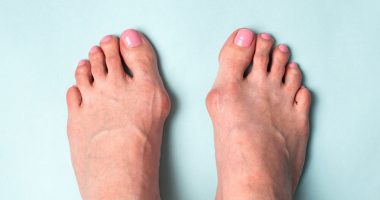Interphalangeal joint arthritis
General information
Osteoarthritis (OA) is one of the most critical medical problems. Its persistent joint damage often leads to severe functional impairment and serious impairment of patients’ social adaptation. OA selectively affects certain groups of joints: the knee, ankle, hip, and others. Hand joints are also one of its standard localizations.
Definition of interphalangeal joint arthritis
Our joints are the intersection where two bones meet and articulate. All joints throughout the body are lined with a smooth substance called cartilage. This ensures that one bone moves smoothly in relation to the other. But cartilage is not just a smooth coating; it is a living tissue constantly breaking down and rebuilding. When destruction begins to take precedence over tissue repair, cartilage degeneration begins. When the intra-articular cartilage in the hands wears down like this, we speak of osteoarthritis (OA) of the interphalangeal joints.
Cartilage is often worn between the distal phalanx and the middle phalanx (distal interphalangeal joint OA) and between the middle phalanx and the proximal phalanx (proximal interphalangeal joint OA).
These joints are crucial to the normal function of the hand, as they move with every movement of the fingers. Because we use them so often, they are very susceptible to wear and tear. This dystrophic process triggers the formation of spiky growths—osteophytes—at the ends of the bones in contact with each other in the joint. This is how the body tries to stop further destruction of the joints. However, osteophytes limit mobility and traumatize the surrounding tissues, leading to chronic inflammation and pain.
Signs of interphalangeal joint OA
The most typical sign of interphalangeal joint OA is the formation of firm nodules in the proximal and distal interphalangeal joints. At first, they may not bother the patient.
However, the main symptom of OA of the interphalangeal joints is pain and stiffness, which initially occurs sporadically, mainly after physical activity, and decreases after rest.
However, with further joint degeneration, the pain becomes constant and increasingly challenging to live with. Over time, the affected joint’s mechanics deteriorate, and other joints in the finger may be affected. The axis of the joint changes over time.
How is interphalangeal arthritis diagnosed?
OA of the interphalangeal joints is diagnosed based on a review of your medical history, examination, and x-rays. Additional tests, such as CT scans, may be required to determine the type of treatment needed.
Treatment methods for arthritis of the interphalangeal joints
Interphalangeal OA treatment aims to relieve pain while maintaining hand mobility. Current recommendations for treating OA of the interphalangeal joints include a comprehensive approach using a variety of treatments that can help curb disease progression, reduce pain, and compensate for existing functional impairments. Both medication and non-medication methods are used.
Medication methods include:
- paracetamol (for minor pain);
- Non-steroidal anti-inflammatory drugs (NSAIDs) in the form of gels applied to the joint or tablets taken orally (if the pain is severe enough);
- Steroid injections (for severe excruciating pain);
- glucosamine and chondroitin sulfate: these are used as long-term therapy to maintain joint mobility.
Non-medicinal methods include:
- education: the patient should receive information about their disease, know what treatments are available, risk factors, and how to correct them;
- orthoses: these devices make it easier to perform daily activities, stabilize the affected joints, and reduce the intensity of pain;
- physiotherapy: magnetotherapy can suppress inflammation and relieve joint pain with a small portable device convenient for independent home use. In addition, it has been observed that magnetotherapy is well combined with NSAID gels and can significantly increase their effectiveness.
What happens if you don’t start treatment on time?
In advanced cases, conservative treatment is no longer helpful, and surgical intervention is needed.
It can be relatively minimally invasive. For example, joint denervation can be performed in some cases. This procedure aims to stop the pain signals to the brain.
Different denervation methods exist: physical, chemical, cold, and thermal. Recently, radiofrequency denervation has become widespread. The essence of this method is that with the help of a special needle under deep anesthesia, the patient has cauterized nerves that transmit the pain signal from the joint to the brain. After that, the sensation of pain disappears.
The method is suitable because it practically does not affect the biomechanics of the joint, which cannot be said about other methods of surgical treatment: endoprosthetics of the hand joints usually leads to reduced mobility, and used in extreme cases arthrodesis of the interphalangeal joints, although it eliminates pain, at the same time eliminates mobility.
All these treatment options are available in more than 800 hospitals worldwide (https://doctor.global/results/diseases/interphalangeal-joint-arthritis). For example, Interphalangeal joint arthrodesis can be done in these countries for following approximate prices:
Turkey $4.0 K in 32 clinics
Germany $12.4 K in 40 clinics
Israel $16.2 K in 16 clinics
United States $16.4 K in 19 clinics
China $16.9 K in 6 clinics.
What you need to remember:
- OA of the interphalangeal joints occurs due to wear and tear (degeneration) of the intra-articular cartilage in the hands.
- Typical signs of OA of the interphalangeal joints:
- The diagnosis of OA of the interphalangeal joints is made based on a review of medical history, examination, and x-rays.
- The goal of treatment for OA of the interphalangeal joints is to relieve pain while maintaining hand mobility. Both drug and non-drug therapies are used for this purpose.
- The following drugs are used to treat OA of the interphalangeal joints: paracetamol, NSAIDs, steroid injections, glucosamine, and chondroitin sulfate (the latter as long-term therapy).
- Of the non-medicamentous means of treatment for OA of the interphalangeal joints, patient education, orthoses, therapeutic exercises, and magnetotherapy are used: it allows the suppression of inflammatory processes and relieves joint pain.
- In advanced cases, surgical treatment is indicated.


